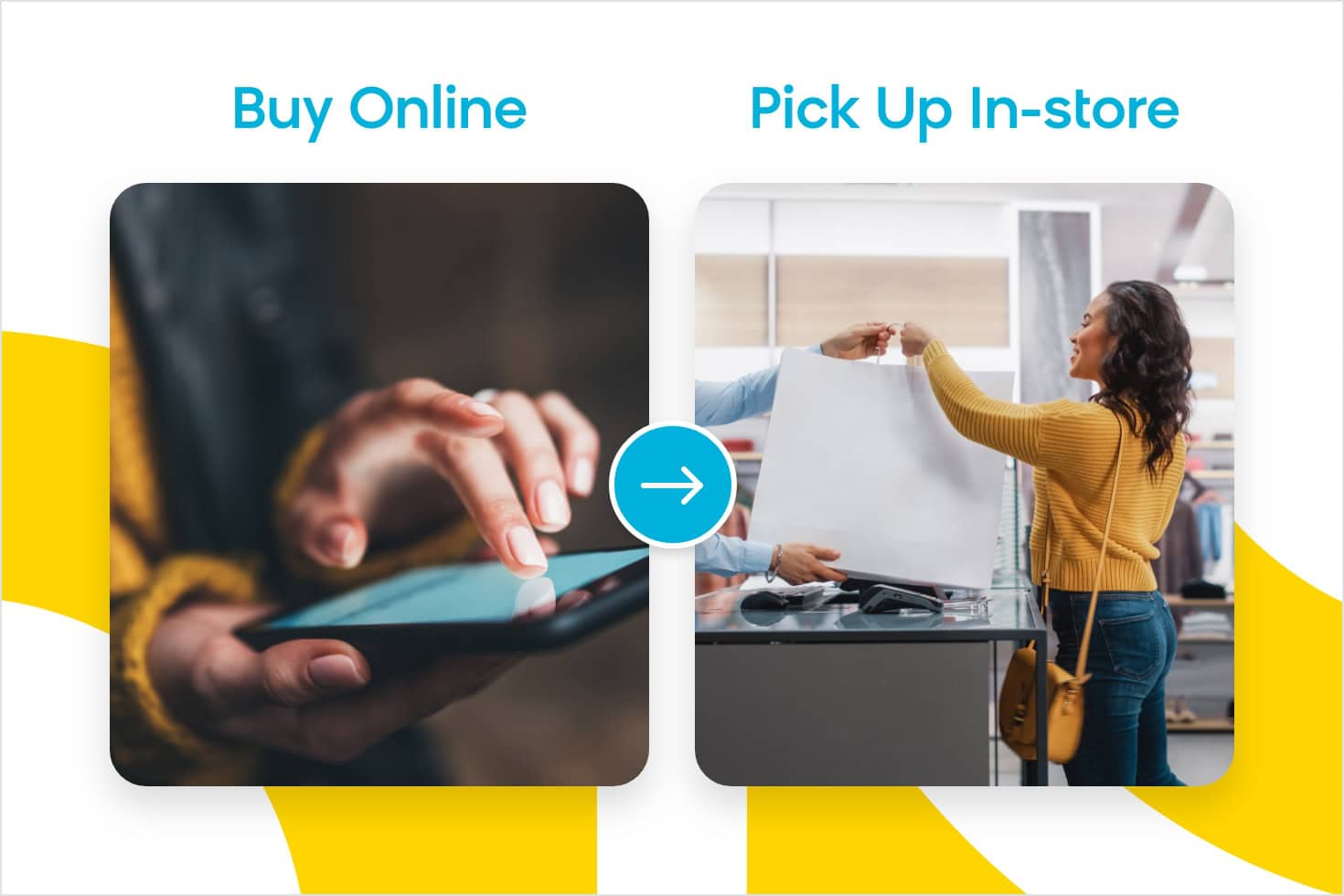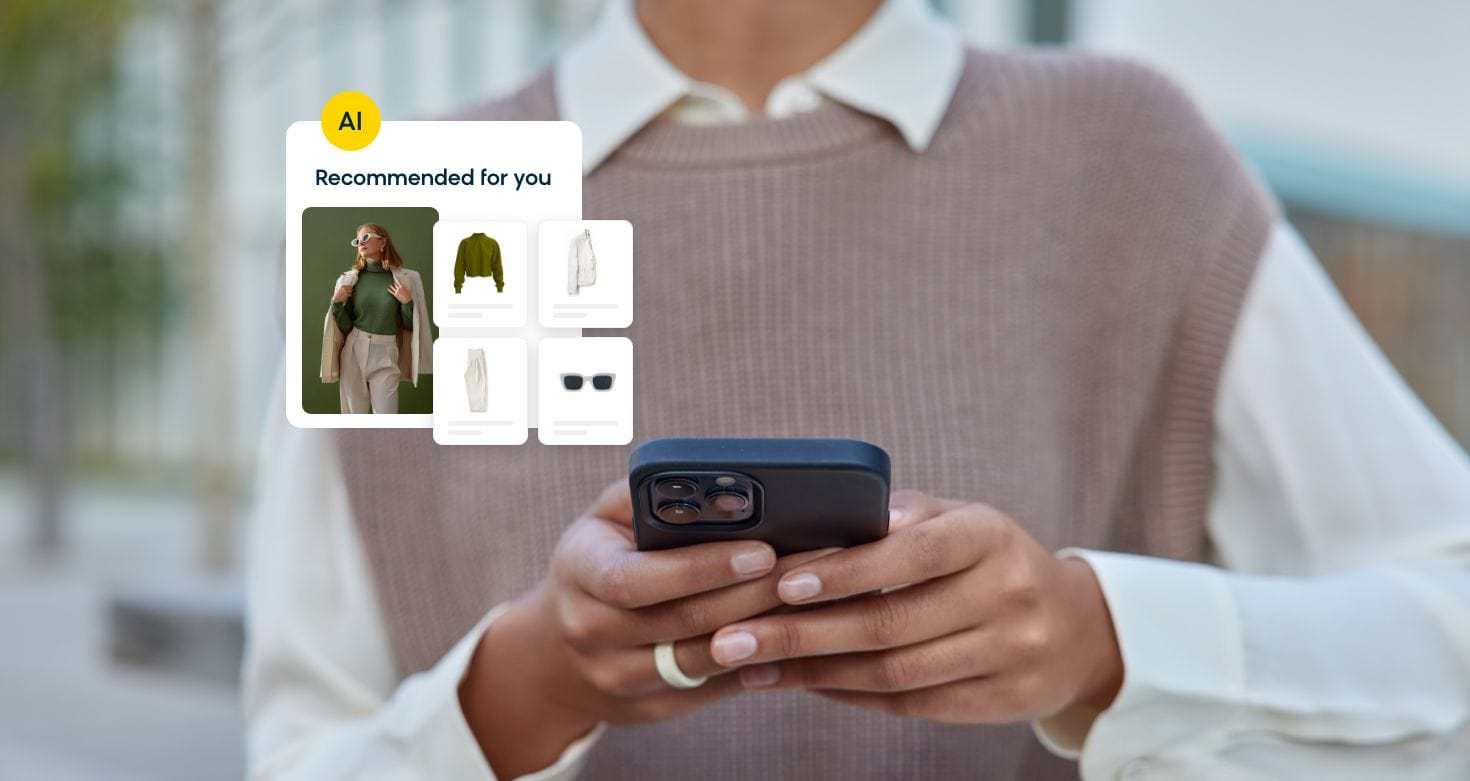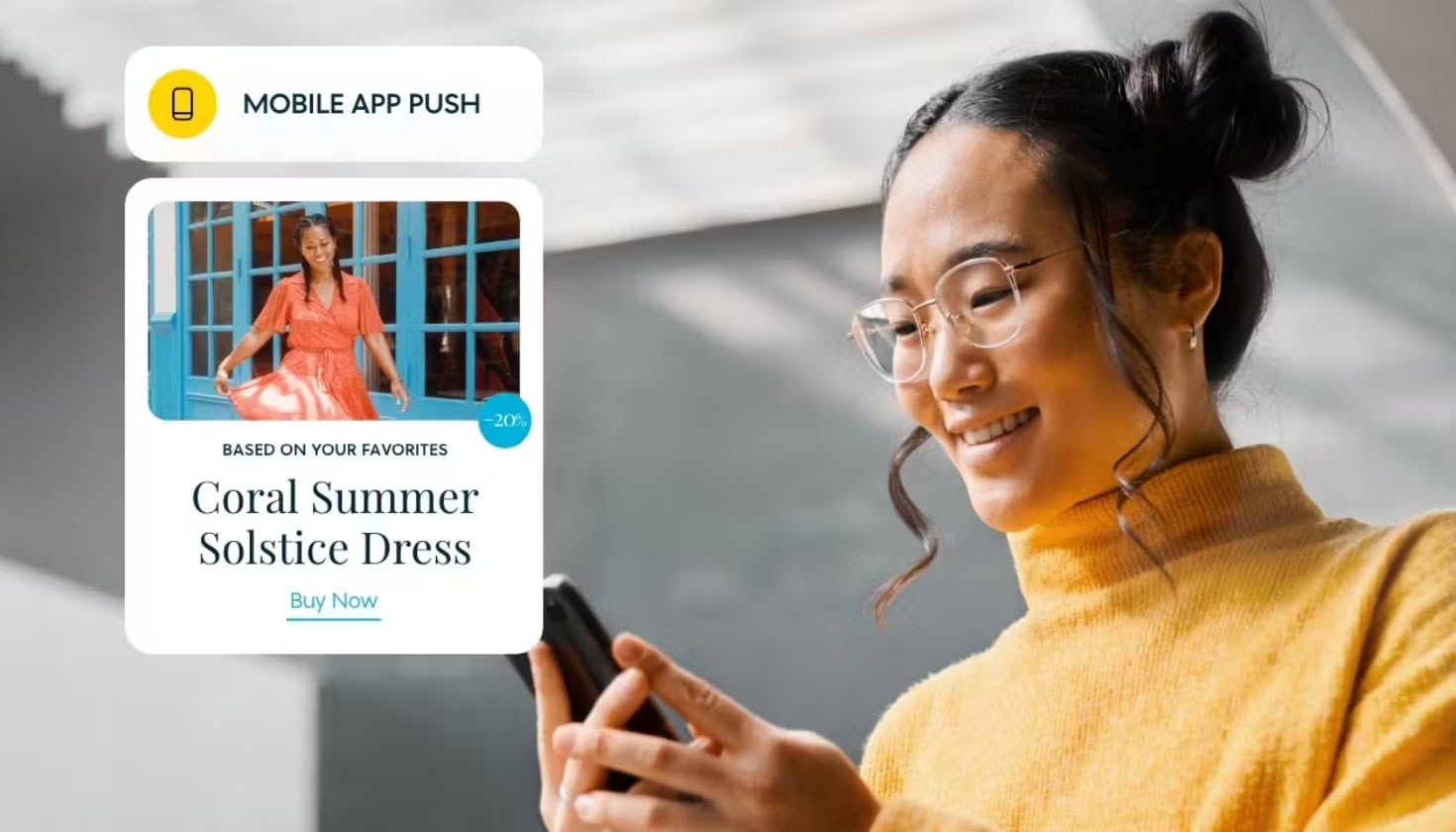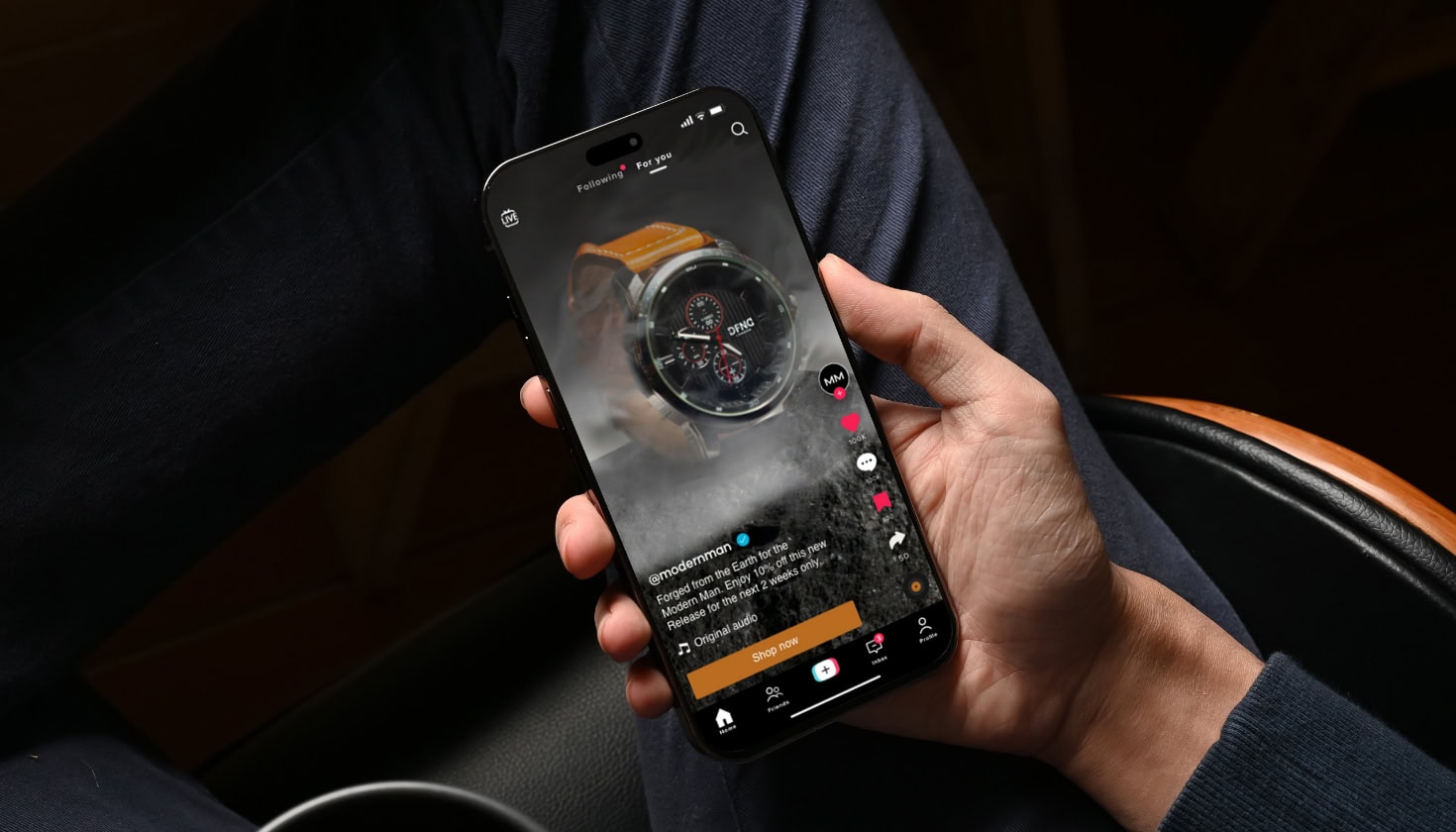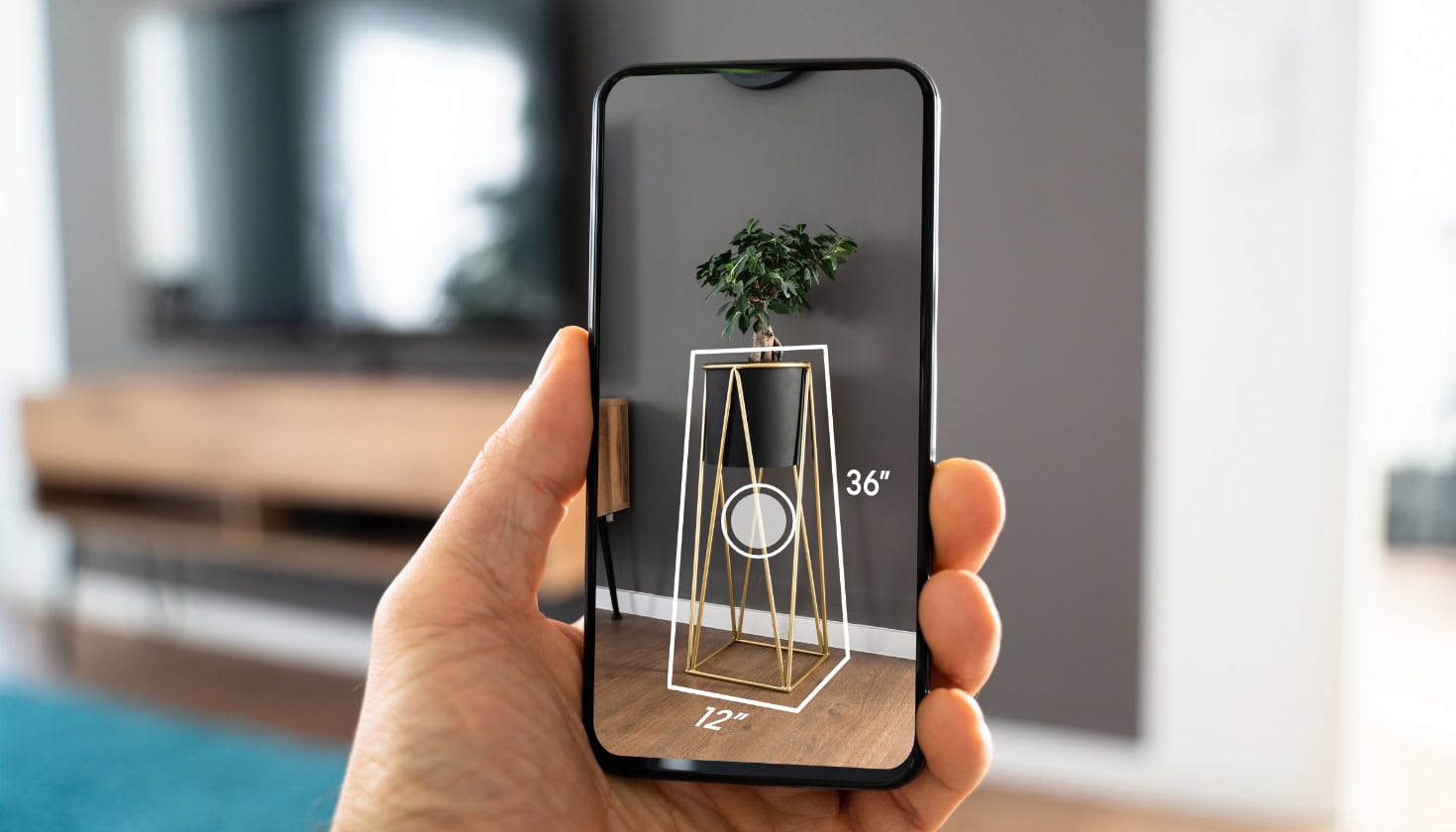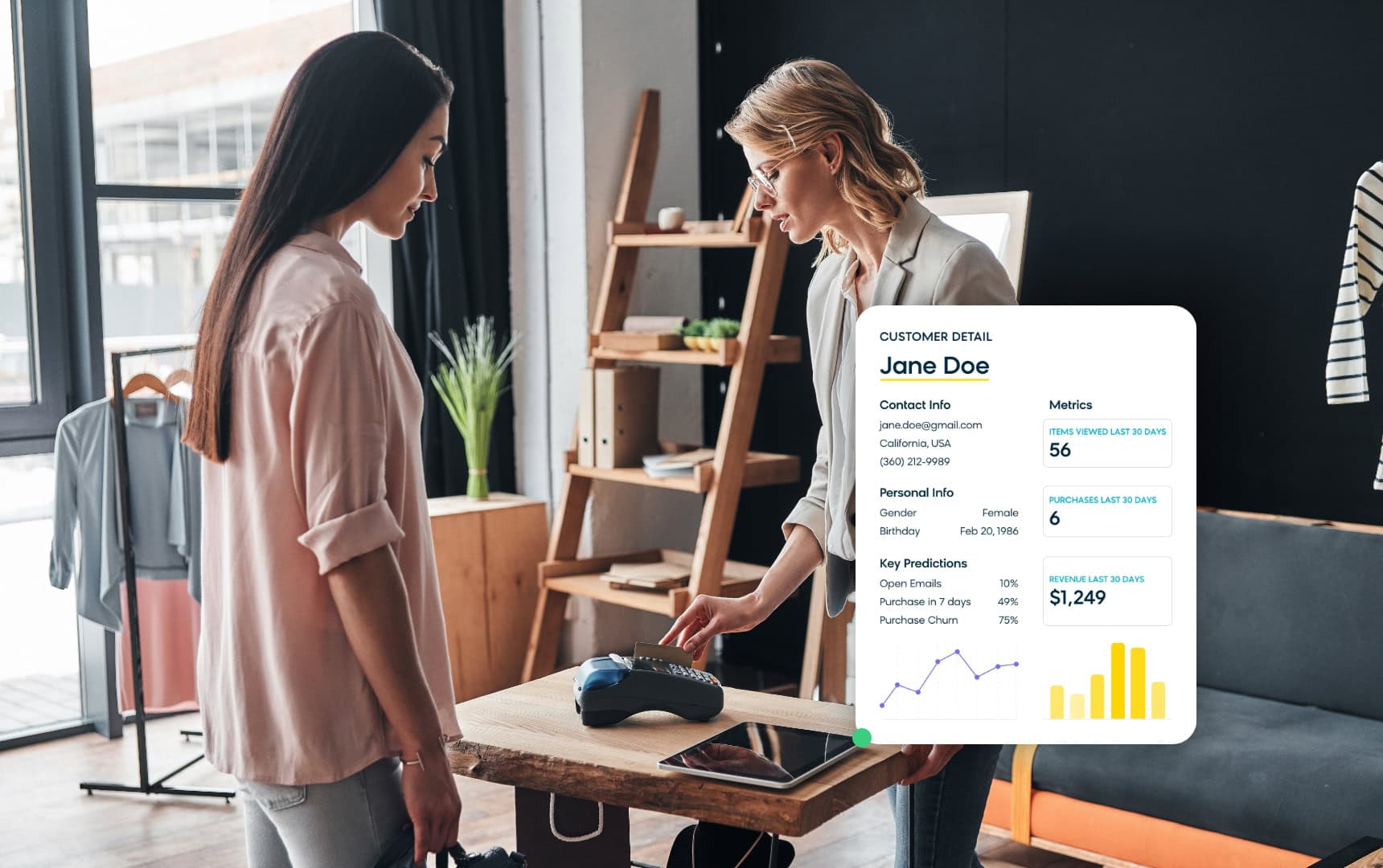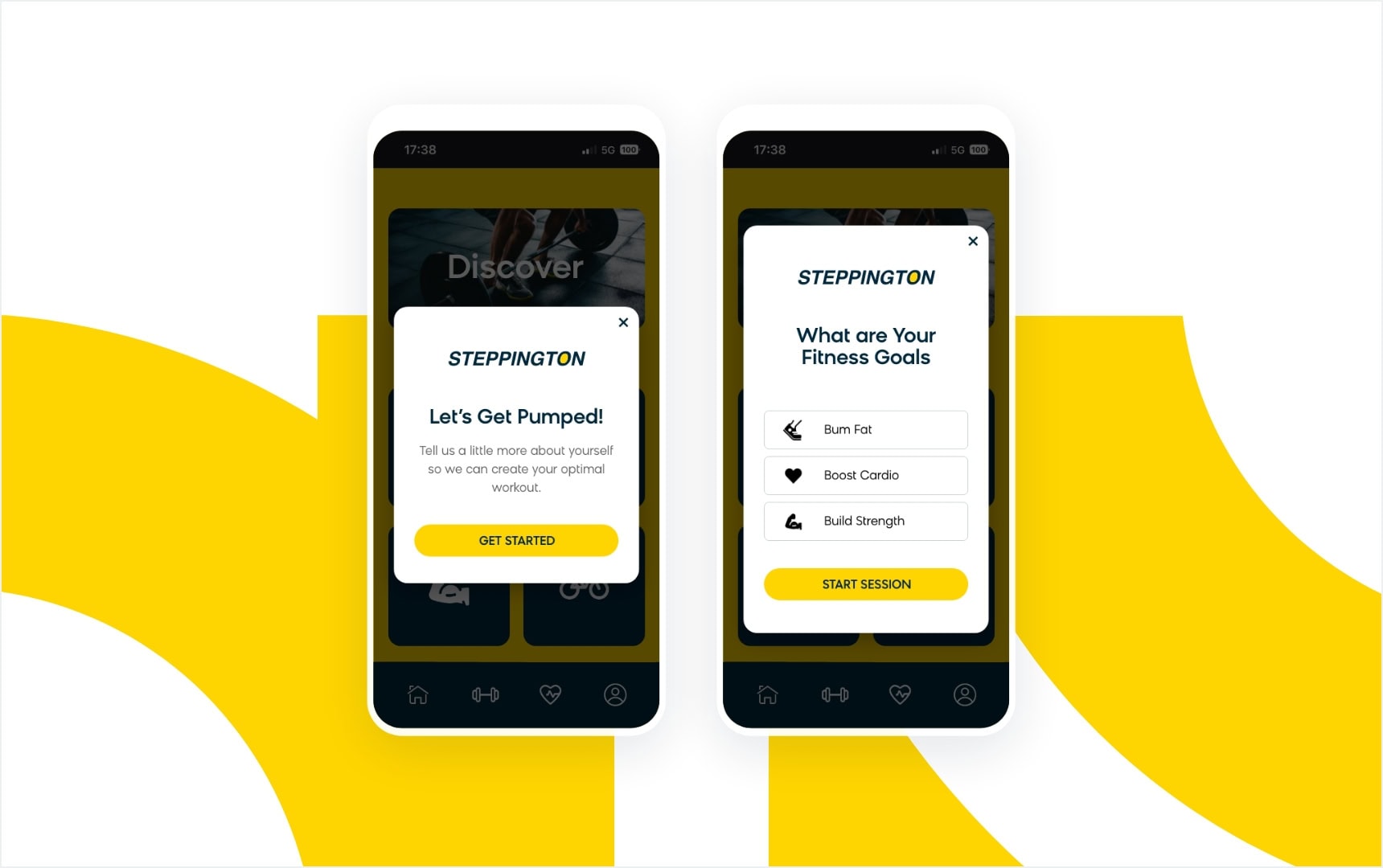Omnichannel retail trends are shaping the future of shopping. Have you ever received an abandoned cart email reminding you of the items you were browsing online? Or perhaps a notification on your phone letting you know that your favorite retailer just restocked the jacket you’ve been eyeing? These seamless experiences are all thanks to omnichannel retailing.
Omnichannel marketing bridges the gap between online and offline channels, allowing customers to shop effortlessly across every touchpoint. It’s all about capturing leads and converting prospects wherever they are in their buying journey. By understanding omnichannel trends, you can meet your customers’ expectations and stay ahead of the curve.
What is omnichannel retail? In a nutshell, it unifies different retail channels like your website, app, social media, and physical stores. This creates a consistent brand experience, seamless transitions between online and offline shopping, and personalized marketing that resonates with individual customers.
The best ecommerce brands excel at creating a seamless experience across all channels. Let’s explore some up-and-coming omnichannel retail trends to help you join their ranks and build a winning omnichannel strategy.
The Rise of Data-Driven Personalization Across Channels
Imagine a world where a customer’s online browsing history follows them to the store, or where inventory levels are synchronized across all channels, all the time. It might seem too good to be true, but it isn’t: Unified commerce can achieve all of this and more.
Omnichannel commerce brings all your retail systems together under one roof. This includes your back-end systems like inventory management, customer relationship management (CRM), and point-of-sale (POS), as well as customer-facing tools like your website and email service provider. By unifying these systems on one platform, you can more effectively manage everything you need to deliver impactful marketing campaigns, targeted ads, and a smooth omnichannel sales process.
Aside from making it easier to deploy and understand your marketing campaigns, unified commerce eliminates data silos. When all of your data is centralized, it’s easier to analyze and use that data. Useful customer data no longer needs to be trapped within different departments, rendering it nearly impossible to use. Breaking down these silos fosters better collaboration and empowers you to personalize the customer experience across all touchpoints.
Leading brands are already seeing the power of connected commerce. Hornby Hobbies, for instance, transitioned from a fragmented system to a unified platform in hopes that it could create an online shopping experience that rivals its in-store presence. By optimizing site search and targeting its email campaigns, the hobby retailer achieved a 10% increase in website conversions and a 34% boost in email marketing revenue.
Click, Grab, Go: Mastering BOPIS
Have you ever added an item to your online cart, only to think better of it once you notice the high shipping costs or estimated delivery date? Shipping costs and delays can be a major turn-off for online shoppers. In fact, 90% of American shoppers consider shipping cost and speed a key factor in their purchase decision.
Buy online, pick up in-store (BOPIS) offers a clever solution to this pain point. BOPIS allows customers to buy items online and pick them up in-store or curbside. This provides the convenience of online shopping with the immediacy of in-store pickup, making it perfect for busy shoppers who don’t want to wait for deliveries or pay shipping fees.
The benefits of BOPIS extend beyond customer satisfaction. Nearly 25% of American shoppers consider BOPIS a “very important” shopping feature, and 47% of shoppers who use BOPIS end up buying additional items while picking up their online orders.
BOPIS also aligns with a growing trend called “blended shopping,” in which customers browse online and purchase in-store or vice versa. This allows customers to better research their purchases and make returns in whatever method is most convenient for them.
If your brand has physical stores, BOPIS is worth exploring. To ensure a smooth experience:
- Offer convenient locations for customers to collect their orders
- Optimize your order processing — efficient order picking and packing will minimize wait times
- Keep customers informed about order status and provide clear pickup instructions
Going the extra mile with BOPIS will win you a positive customer experience that encourages repeat purchases.
Know Your Customers, Win Their Hearts
It’s every shopper’s dream to visit a website and feel like everything they see is exactly what they’ve been looking for. Personalization makes that a reality.
Personalization isn’t a fad — it’s a foundation. While some trends may come and go, marketing personalization has stood the test of time. That’s because personalization goes beyond mere convenience. It fosters customer value and respect. Effective personalization lets customers know that your brand understands their needs, values them as customers, and wants to give them the best experience possible. All of this goes a long way in strengthening customer loyalty.
AI for omnichannel technology makes it easy for retailers of all sizes to leverage personalization. Previously, personalization might have been cost-prohibitive or limited to large corporations. Now, with accessible marketing automation tools and customer relationship management (CRM) software, omnichannel retailers can easily create highly targeted campaigns that send relevant products and other messaging directly to the customers most likely to be interested.
Real-world examples illustrate the impact. Yves Rocher uses AI-powered recommendation engines to suggest products likely to convert even anonymous browsers. Meanwhile, for Mansion Group, personalization has unlocked new opportunities for scaling the company’s reach. The online casino business has doubled its personalization journeys and streamlined its operation by using a single platform for all omnichannel retailing efforts, including weblayers and SMS messaging.
Mobile Mania: The Rise of “M-Commerce”
Mobile shopping makes up the lion’s share of online browsing and order volume. To stay ahead, brands need a robust mobile strategy that goes beyond just a website. Two solutions come to mind: mobile shopping apps and mobile payment solutions.
Mobile Shopping Apps
Remember the saying, “There’s an app for that”? It certainly rings true for mobile shopping. Today’s shoppers flock to mobile apps, with a whopping 54% of mobile commerce payments being made through dedicated shopping apps.
Why are apps so popular? They offer a frictionless omnichannel shopping experience right in the palm of your hand. Customers can browse products, make purchases, track orders, and access loyalty programs — all with a few taps. Plus, apps have additional benefits. They can send targeted push notifications to keep customers engaged and offer app-specific perks like discounts on merchandise or shipping.
Mobile Payment Solutions
Customers aren’t only using their mobile phones to shop and manage orders. They’re also able to store their payment information on their phones, thanks to mobile payment solutions like Apple Pay and Google Pay.
These services create a digital “wallet” containing encrypted versions of debit or credit card details. This digital wallet can be used anywhere traditional cards are accepted, both online and in-store. Online, mobile payments seamlessly integrate with checkout processes. In physical stores, near-field communication (NFC) technology allows a simple tap of your phone on the reader to complete the transaction.
Mobile payments also offer significant security advantages. Customers ditch the risk of lost or stolen cards, and these services use virtual card numbers instead of real ones, adding an extra layer of protection against fraud. By integrating mobile payment options, you show your customers you prioritize their security and smooth checkout. You also boost your omnichannel retailing experience. It’s a win-win for everyone.
Likes Turn to Sales: The Social Commerce Boom
Scroll through your favorite social media platform, and you’ll likely see plenty of sponsored ads and posts from your favorite retailers alongside updates from friends. In 2024, social media presents a massive sales opportunity for ecommerce businesses. A staggering 50% of global shoppers discover new products through social media, and an impressive 59% have made purchases directly from these platforms.
Platforms like Instagram and TikTok are capitalizing on this trend. These apps present endless opportunities for brands to showcase products, engage with followers, and even facilitate purchases — all within the app. Influencer marketing has further ignited social commerce by allowing brands to leverage the trust and reach of social media stars to promote products and drive omnichannel sales seamlessly.
Ignoring social commerce is no longer an option. By doing so, your brand is missing out on a big opportunity to make more sales and connect with customers more deeply. Here are some key strategies to try:
- Embrace the power of user-generated content by encouraging customer reviews and photos
- Partner with relevant influencers to showcase your products authentically
- Take advantage of paid advertising opportunities, which can increase brand awareness and drive impulse purchases
Look to brands like Rapha Racing for inspiration. The cycling clothing retailer implemented a special API that allowed it to track purchases triggered by its social media campaigns more accurately. With the API in place, Rapha Racing successfully tracked 31% more purchased events than before, proving the effectiveness of its social commerce efforts.
Frictionless Transactions With Tap and Pay
Remember the switch from cash to cards? Contactless payments are revolutionizing transactions once again. Methods like tap-to-pay cards and mobile wallets (i.e., Apple Pay and Google Pay) are surging in popularity due to their speed and ease. Consumers simply tap their card or phone to complete a purchase.
Contactless payments are a crucial element of a seamless omnichannel retail experience because they bridge the online-offline gap by offering a quick and secure way to pay, regardless of where a customer finalizes their purchase. Whether it’s a smooth BOPIS transition or simply faster in-store checkouts, contactless payments enhance convenience for both omnichannel retailers and customers.
Retailers benefit from faster checkout times, reduced fraud risk associated with physical cards, and improved operational efficiency. Customers enjoy the convenience and speed of contactless payments, along with the added security of chip-and-pin technology embedded in contactless cards.
To effectively integrate contactless payment systems, omnichannel retailers should take a few key steps:
- Partner with a reliable payment processor to ensure secure transactions
- Upgrade the company’s point-of-sale systems to accept contactless payments
- Educate employees on contactless payment procedures for a seamless checkout experience
- Display clear signage informing customers about contactless payment options, which eliminates any confusion and encourages shoppers to reap the benefits of contactless payments
By embracing contactless payments, you create a faster, more secure, and more convenient experience for everyone involved.
The AR/VR Revolution for Retail
Augmented reality (AR) and virtual reality (VR) are no longer just for fun and games. These technologies are also changing the way we shop, making it more interactive and convenient than ever before.
AR allows shoppers to interact with the physical world digitally. Imagine using your smartphone camera to see how a new piece of furniture would look in your living room before you buy it or virtually trying on makeup to find the perfect shades for your skin tone.
VR takes this a step further by immersing you in a completely simulated environment. For example, a clothing retailer could create a VR experience where you can browse items on virtual racks and try on clothes in a digital fitting room. This level of immersive shopping allows customers to get a better feel for the brand’s aesthetic and experiment with different styles — all from the comfort of their own home — before making a purchase.
Several retailers are already using AR and VR to enhance the omnichannel shopping experience. Eyewear brand Warby Parker has developed an AR app that allows customers to virtually try on glasses. This increases customer confidence in their purchase while also reducing the likelihood of returns. A VR app from furniture giant IKEA allows customers to virtually place furniture inside their homes, facilitating the planning and purchasing process and ensuring that shoppers purchase furniture that fits their homes.
Sustainability Sells
Consumer demand for sustainable products and practices is booming. 63% of shoppers report actively shifting their habits toward buying sustainable products, while only 10% haven’t changed their shopping habits at all. This green wave presents a massive opportunity for retailers to differentiate themselves by integrating sustainability into their omnichannel strategies.
Here’s how to embrace sustainability in your omnichannel approach:
- Offer packaging made from recycled or biodegradable materials to minimize waste and environmental impact
- Highlight products made with recycled materials or manufactured with sustainable practices
- Partner with suppliers who prioritize eco-conscious practices throughout the manufacturing, shipping, and receiving process
Sustainable cycling apparel company Isadore exemplifies the power of this approach. Bringing its omnichannel marketing under one platform made it easier for the brand to send highly targeted emails and promote relevant on-site experiences, leading to increased sales. But the benefits went beyond profit — reducing its return rate by 29% significantly slashed potential emissions and waste. Isadore’s success proves that omnichannel efficiency can be a win-win for both businesses and the environment.
Challenges and Opportunities for Omnichannel Retail
Omnichannel retailing offers a powerful way to connect with customers, but creating a truly unified strategy presents both challenges and opportunities. Let’s explore some of the hurdles you might encounter and how to overcome them.
Technology Limitations
Technology is at the core of omnichannel retail’s success. However, limitations and integration hurdles can pose significant challenges.
For instance, a retailer might have a state-of-the-art website with a personalized recommendation engine, but if the POS system in its physical stores doesn’t integrate with the website’s customer data, this disrupts the highly personalized omnichannel experience.
Imagine a customer browsing for running shoes online and receiving personalized recommendations based on their past purchases. But when they visit the store to try on the shoes, the salesperson has no access to this information, hindering the ability to offer further personalized service or recommendations.
This data silo effect is a common hurdle. Retailers need to invest in the right technology solutions, such as unified commerce platforms and data management systems, to ensure smooth information flow across all channels. While this can be a significant financial commitment, failing to do so can lead to a disjointed customer experience. Customers who experience inconsistency across online and offline touchpoints are more likely to feel frustrated and abandon their purchases. A well-integrated tech stack helps you avoid this scenario and provide a top-tier customer journey for everyone.
The “Phygital” Experience
A key challenge in omnichannel retail is creating a seamless experience for customers who move between online and offline channels. Customers expect consistency in product information, pricing, and promotions, whether scrolling through your mobile app or walking the aisles of your omni-retail store.
The “physical” element of the “phygital” (physical and digital) experience is often overlooked, but even in the digital age, brick-and-mortar locations offer a valuable space for customers. Here, they can:
- Interact with products firsthand to assess quality, fit, and feel
- Receive personalized service and expert advice from knowledgeable salespeople
- Build a deeper connection with your brand through face-to-face interactions and a curated in-store environment
The key is to create a synergy between online and offline retail channels. To do this, robust data integration is essential. You need a unified commerce platform that eliminates data silos and ensures all channels operate from a single source of truth. This creates a seamless omnichannel experience that delights customers and boosts your bottom line.
Customer Trust and Loyalty
In today’s data-driven world, customer trust is paramount. Consumers are increasingly concerned about privacy and security. To build trust, prioritize clear communication and consistent brand messaging across all channels. A scattered brand image creates confusion and undermines your credibility, ultimately eroding customer loyalty.
Transparency is key. Be upfront about how you collect and use customer data. A 2023 Pew Research Center poll revealed that 81% of Americans are worried about how companies handle their data, and 67% don’t even understand how it’s used.
To alleviate customer concerns and win their trust, your brand should always respect customers’ data and communications preferences, and use only zero-party or first-party data when marketing to them. Zero-party data in particular reigns supreme for personalization because it’s willingly provided by the customer. This eliminates privacy concerns and ensures that your intel is accurate.
Beyond basic trust-building, you can use customer loyalty programs to attract and retain customers across all of your channels. By offering rewards for purchases, reviews, and social media engagement, retailers can incentivize repeat business and encourage brand advocacy.
Agentic AI and Omnichannel Retail
Agentic AI is reshaping the future of omnichannel retail.
By granting AI systems autonomy to make real-time decisions, brands are able to deliver more meaningful, dynamic, and personalized customer experiences. This shift pushes beyond static, rule-based systems and moves into a world where AI can understand customer behaviors, predict needs, and execute strategies at scale without human intervention. For businesses navigating multiple channels, this translates into seamless experiences that adapt to individual shoppers across their preferred touchpoints, whether online or in-store.
One of the most significant impacts of agentic AI is how it drives agentic personalization. Customers increasingly expect brands to understand and cater to their preferences, and agentic AI makes this possible by unifying and analyzing vast amounts of data from various sources. For example, if a customer browses skincare products online, visits a physical location, and then adds a product to their cart via mobile app, agentic AI can stitch these interactions together. It then crafts tailored messages, recommends complementary products, or even deploys targeted discounts with impeccable timing.
Agentic AI also transforms the operational side of retail. For omnichannel businesses, managing campaigns across email, social media, SMS, and more can be a daunting task. Retailers no longer need to manually coordinate schedules or tweak messages for individual platforms.
Instead, AI determines the right content, channel, and timing for each customer, ensuring that campaigns resonate without overburdening marketing teams. This kind of streamlining doesn’t just save time; it empowers teams to focus on strategy and innovation instead of day-to-day logistical tasks.
The long-term benefits of agentic AI are undeniable for both brands and consumers. Businesses enjoy enhanced scalability, improved ROI, and the ability to keep up with rapidly evolving consumer expectations. Meanwhile, customers benefit from smoother, faster, and more contextually relevant interactions. For example, think of an AI system that can anticipate low stock and suggest alternative in-store pickup locations or offer expedited shipping for preferred customers before they’re even aware of a potential delay. These proactive interactions eliminate pain points, strengthening trust and elevating satisfaction.
The Future of Retail Is Omnichannel
The future of retail is here, and it’s all about creating a seamless shopping experience across every touchpoint.
The omnichannel retail landscape is brimming with exciting trends, from the convenience of contactless payments to the immersive experiences offered by AR and VR technology. We’ve explored the importance of building trust with transparency and data privacy practices, as well as the growing influence of sustainability on consumer choices.
The next time someone asks you, “What is omnichannel retailing?” you’ll be ready to explain: It’s about making shopping effortless and consistent, no matter where a customer interacts with your brand.
The retail industry is constantly evolving, and staying on top of the latest in omnichannel retailing is essential for success. By embracing omnichannel trends that prioritize seamless customer journeys, retailers can unlock significant growth potential.
Transform your omnichannel retail strategy with Bloomreach Engagement. Unify your data, personalize every customer journey, and let AI-powered agents run real-time campaigns across 13+ channels. Explore the future of omnichannel retail today.



